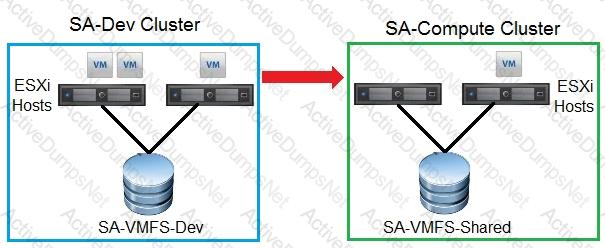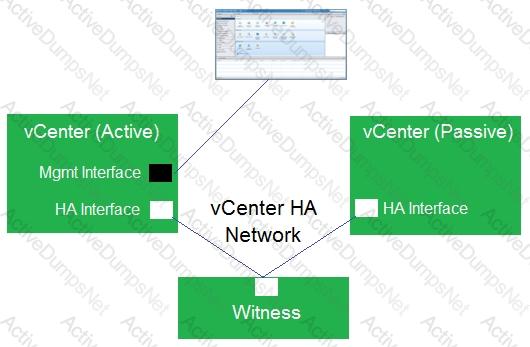VMware 2V0-21.20 Professional VMware vSphere 7.x Exam Practice Test
Professional VMware vSphere 7.x Questions and Answers
Which vSphere feature provides for continuous local data center availability? (Choose the best answer.)
What is the default shutdown order of virtual machines (VMs) on a host? (Choose the best answer.)
Refer to the exhibit.

Which two migration methods can an administrator use to move virtual machines from the SA-Dev cluster to the SA-Compute cluster? (Choose two.)
Which resource pool setting is used to specify the relative priority or importance as high, normal or low? (Choose the best answer.)
An administrator is tasked with upgrading an existing vSphere environment to version 7.0. There are existing VMFS3 and VMFS5 datastores in the environment.
Which statement is true regarding this upgrade? (Choose the best answer.)
When deploying a vCenter Server Appliance, which two single sign-on (SSO)-related options are presented to an administrator? (Choose two.)
An administrator is NOT able to enable ESXi secure boot.
What is a possible cause of this issue? (Choose the best answer.)
Refer to the exhibit.

Which element is missing from this vCenter High Availability (HA) cluster? (Choose the best answer.)
In a vSphere High Availability (vSphere HA) cluster, which action does vSphere HA take when the VM Monitoring service does NOT receive heartbeats from a virtual machine (VM) in the cluster? (Choose the best answer.)
What are two pre-requisites for enabling ESXi secure boot? (Choose two.)
What is the foundation of a software-defined data center (SDDC)? (Choose the best answer.)
An administrator is tasked with upgrading an existing vSphere environment to version 7.0. The environment consists of mounted NFS v3 datastores. The new design requires configuration of NFS v4.1 datastores.
Which statement is true regarding this upgrade? (Choose the best answer.)
What is the minimum CPU core requirement for successful installation, or upgrade, or ESXi on a host? (Choose the best answer.)
An administrator sees a virtual machine message that reads, “Consolidation is required” in the vSphere Client.
Which action does ESXi take when the administrator completes snapshot consolidation? (Choose the best answer.)
Each logical port on a vSphere standard switch can be a member of how many port groups? (Choose the best answer.)
An administrator runs a two-node vSphere cluster, which contains two domain controller virtual machines (VMs). The administrator wants to ensure that VMs run on separate hosts without interfering with normal maintenance operations.
How should the administrator configure Distributed Resource Scheduler (DRS)? (Choose the best answer.)
